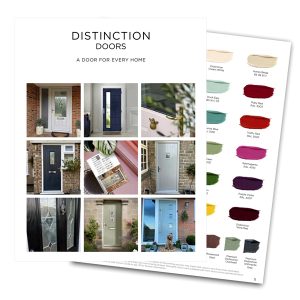Why Do Exterior Doors Rot at the Bottom?
Exterior doors endure constant exposure to the elements, making them vulnerable to damage over time. Rot at the bottom of these doors occurs due to specific issues. Understanding the causes and solutions, including upgrading to durable uPVC doors or composite doors, can provide lasting results.
Causes of Rot in Exterior Doors
Moisture Buildup
Water exposure remains the primary reason for rot at the bottom of exterior doors. Rainwater, condensation, or standing water seeps into wooden doors, leading to decay.
Inadequate Weatherproofing
Doors without proper weatherproofing fail to resist moisture effectively. Cracks, damaged seals, or worn-out thresholds allow water to infiltrate and settle in vulnerable areas.
Lack of Maintenance
Neglecting routine maintenance accelerates wear and tear. Dirt and debris trap moisture, while unchecked damage worsens over time.
Age and Wear
Older wooden doors naturally degrade after years of exposure to weather conditions. The bottom of the door, closest to the ground, experiences the most impact.
Signs of Rot at the Bottom of Exterior Doors
Soft or Spongy Wood
Rotting wood feels soft and yields under pressure, a clear indication of decay.
Peeling Paint or Varnish
Moisture trapped beneath the surface causes paint or varnish to bubble and peel away.
Discolouration or Staining
Dark or discoloured patches near the bottom of the door highlight water damage and rot.
Cracks or Splitting
Visible cracks or splits in the wood signal advanced rot and structural weakness.
Replacement Options: uPVC and Composite Doors
Benefits of uPVC Doors
uPVC doors provide a modern, practical solution to the problem of rot.
Waterproof and Durable
uPVC resists water penetration, eliminating the risk of rot. Its durable construction withstands wear and tear from weather and daily use.
Low Maintenance
Unlike wooden doors, uPVC requires minimal upkeep. Regular cleaning ensures it stays in top condition for years.
Customisable Designs
Choose from a variety of styles, colours, and finishes to suit your home’s aesthetic.
Advantages of Composite Doors
Composite doors combine the strength of multiple materials for enhanced performance.
– Superior Durability
These doors resist moisture, warping, and rot thanks to their advanced construction. They last longer and require less maintenance.
– Excellent Insulation
Composite doors offer superior thermal and sound insulation, improving energy efficiency and comfort.
– Stylish and Versatile
Available in a range of colours and designs, composite doors enhance your home’s curb appeal.
Temporary Fixes While Planning Replacement
If immediate replacement isn’t an option, consider temporary measures to manage rot:
– Seal the Affected Area: Use a wood sealant or filler to prevent further moisture infiltration.
– Install a Door Sweep: Add a rubber or vinyl door sweep to block water and debris.
– Improve Drainage: Ensure proper drainage around the doorway to reduce water exposure.
Why Replace Rotting Doors?
Enhanced Home Security
Rot compromises the structural integrity of doors, making them easier to break. Replacing them with durable uPVC or composite doors improves security.
Increased Energy Efficiency
Modern door options, such as composite and uPVC doors, provide excellent insulation, reducing energy costs.
Improved Aesthetic Appeal
A new, stylish door transforms the appearance of your home, creating a fresh and inviting look.
Conclusion
Rot at the bottom of exterior doors arises from moisture, inadequate maintenance, and aging materials. While temporary fixes can delay further damage, replacing your door with a uPVC door or composite door ensures a long-lasting solution. These modern materials offer durability, weather resistance, and style, making them a smart investment for your home.

